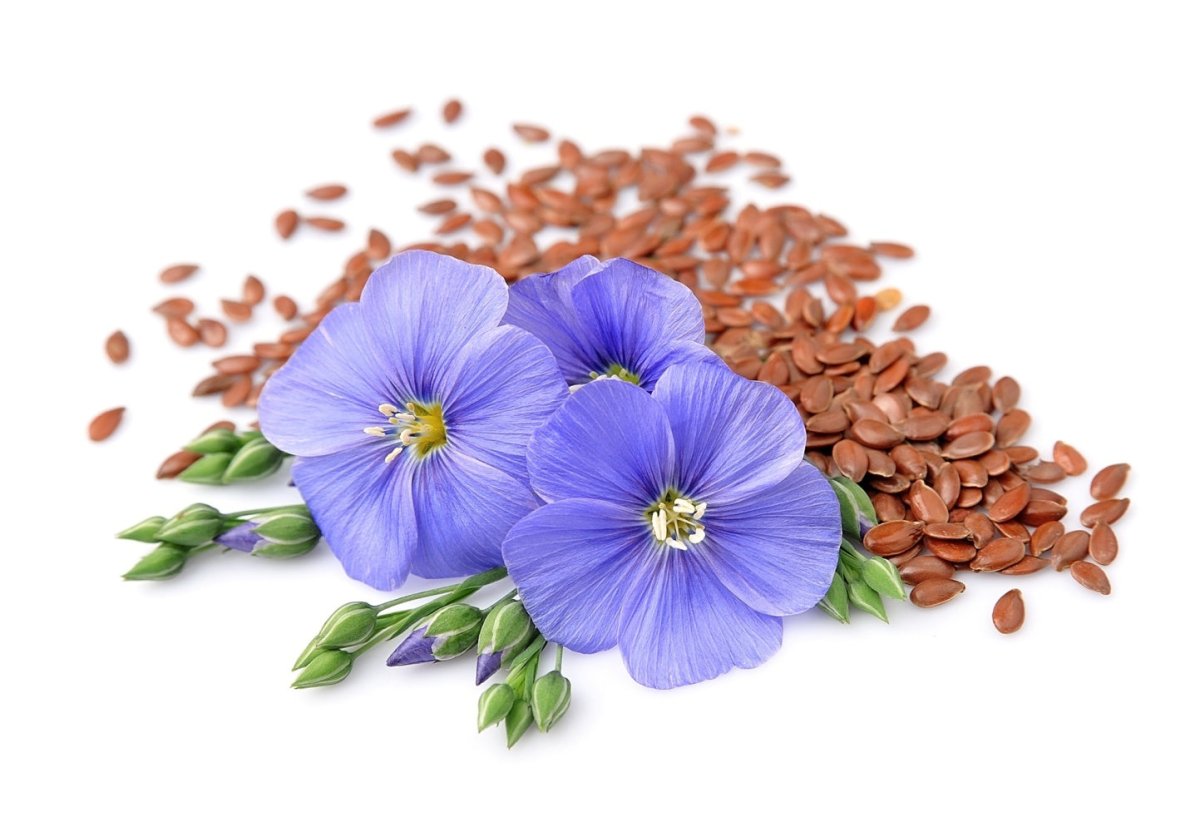Most people do not realize that the comfortable linen you may lay down on at night all started with a leafy plant with blue or white flowers. The flax plant is not only used for nutritious flax seeds and flax seed oil, but also to make linen. Flax plants have been used to make linen for thousands of years, some say as early as 3000 B.C, when they were woven into white fabric and wrapped around mummies of Egyptian pharaohs. Here we will go over how flax is grown, harvested, and how it eventually becomes fabric.
How Flax is Grown
The flax plant must be replanted each year. From the very first day the seeds are planted to the time the plant can be harvested takes about one hundred days. The weather has to be perfect for the flax plant to grow. These plants do not usually grow well in very hot weather, so therefore must be grown in cooler weathered months or in certain parts of the world that has perfect weather year-round.
Flax seeds should be planted in shallow soil and can be done either by hand or by machine. In some parts of the world, herbicide or tilling should be used to combat weeds. Weeds can be very bad for flax plant farms because they reduce the fiber yields and make it very hard to harvest the plant. The plants are usually weeded after they have grown a few inches. By the end of three months, the plants are normally fully grown about two to four feet high.
How Flax is Harvested
Around ninety days the leaves of the flax plant will turn yellow and the seeds brown. This will let those that are harvesting known that it is time. It is important that the plant be pulled as the leaves are turning and not much longer, as delaying will result in poor linen fibers. In addition, the stalk should be removed from the ground and not cut. Cutting would result in losing sap, which takes away from the quality of the linen. It is also important that the narrow ends of the stalk be taken care of so that the fibers can be spun into smooth yarn. Most of the time all of this is done by hand; however, there are some places that use machines to pull the plants out of the ground.
How Linen Fiber is Extracted from the Flax Plant
To extract the linen fiber from the flax plant, the plant must go through combs that removes the seeds and leaves. This is usually done by a machine.
Afterwards, the bark around the fiber must be decomposed, which is usually done with water or sometimes chemicals. Both ways loosen the gum that holds the fiber to the stem. This step is very important, because if it is not done correctly it will either not allow the fibers to separate or it could weaken the fibers. Many countries still do this process by hand by using streams or baths, which can take a week or two. Manufactures, on the other hand, use chemicals to complete this process, which cuts a lot of time. However, some believe that the chemicals used effects the color and the strength of the fibers, which is why the finest linen is done the natural way.
After removing the bark, the next process is to pull out the linen fibers. To do this, the remaining flax plant is squeezed and dried out to prepare it for the next process called breaking. After they are dried, they go through rollers that break the stem and separate it into the exterior fibers and the interior fibers, which is the fibers used to make the linen.
Last, the fibers used to make linen is combed and straightened. The combing process creates short and longer fibers that are separated. The shorter fibers are usually saved for more course and sturdy goods, while the longer fibers are made into the luxurious linen fibers.
How Flax Plants Becomes Fabric
Before these fibers can be made into fabric, they must first be spun into thread or yarn. The longer fibers are put through a machine that takes two parallel fibers and spins them into a sliver. These slivers are then spun into thread on either bobbins or spools. The more luxurious linens are made with thread that was spun wet, while the coarser yarns are made by spinning dry fibers.
Before the luxurious yarn is done it must first dry. To dry this yarn, it is transferred from the bobbins to a larger reel where they are then taken to dryers. When dry they are then wound again on bobbins, and eventually woven into fabric.
The measurement of flax yarn is called the cut. The cut is based off one pound of flax spun into three-hundred yards of yarn. If one pound of flax is spun into six-hundred yards, then it is called a “no.2” cut. The finer and luxurious the yarn, the higher the number.
Linen’s Increase in Popularity
After knowing the process, it is no wonder that linen today is known as a luxury fabric. It takes more time, money, and manpower to produce when compared to other natural fabrics like cotton. Today linen is used to make the most luxurious bedsheets, towels, napkins, decorative tablecloths, and so much more.
Top Producers of Linen Fabric
Many top producers of fine linen come from European countries, where the weather is ideal for growing flax plant and most of the flax plant farms are still run by manpower instead of machines. The top countries that produce fine linen include Belgium, Ireland, France, and Lithuania.


Leave a comment